MACHIN AT 50
Royal Mail
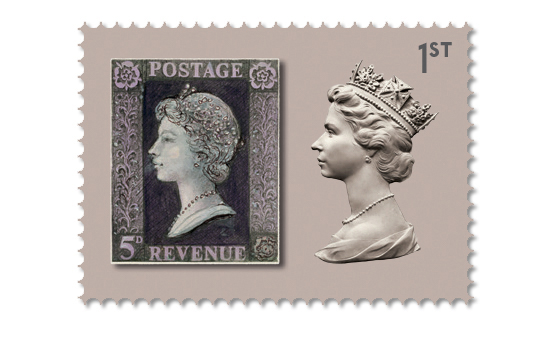
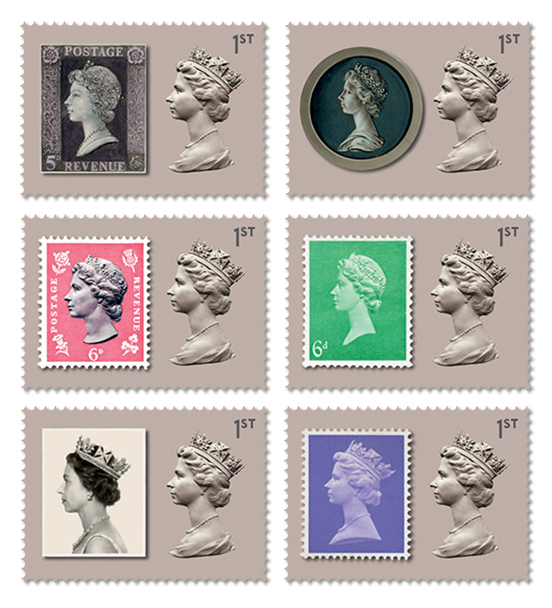
In June 1967 the Royal Mail issued the first new definitive stamps featuring a sculptured relief profile of Queen Elizabeth II by the artist Arnold Machin. Since then it has been reproduced more than 175 billion times and it has become a British icon. This 50th anniversary commemorative set presents the evolution of the stamp design — for what has become known as the 'Machin definitives'.
Ever since the Penny Black was issued in 1840, all British stamps have featured the head of our reigning monarch. Being the first of its kind in the world, the Penny Black didn't have to include 'Great Britain' as its country of origin. To this day, British stamps remain the only stamps in the world that do not declare a nationality. Our monarch's head is deemed a worldwide identifier and this unique distinction provided a direction for the development of our stamp designs; the subject of the stamps was not Arnold Machin or indeed the definitive stamps themselves, rather, it should be the portrayal of The Queen.
As we investigated Machin's working methods and tracked his proposals we slowly began to identify the pivotal decisions that led to the Machin definitive. The twists and turns of the design process in the 1960's seem no different to us as stamp designers in 2017; there was the same lengthy testing, refining, presenting, reworking, testing, refining, presenting cycles. However, as we studied each of Machin's submissions to the Royal Mail's independent Stamps Advisory Committee (SAC), we realised that we were looking at a stop-frame visual narrative of the evolution of the Machin definitive. Eventually, our design proposal became a stamp time line — on a set of stamps.
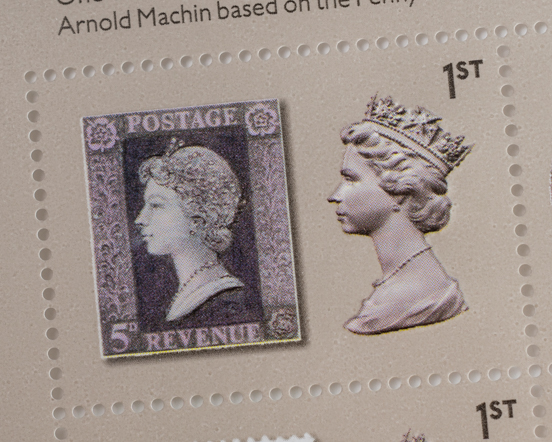
January 1966
It was the stamp designers of the early 1960's that put pressure on the Royal Mail to commission a new portrait of The Queen. The sculptor Arnold Machin had recently created a bas relief profile for the Royal Mint's new decimal coins and building on this experience, he eventually emerged from a lengthy competition as the most enthusiastic and capable artist for this Royal Mail commission. Our first stamp features one of Machin's early sketches, taken from a batch of nearly 70 he submitted during the competition phase. His admiration for the Penny Black is evident in these early sketch designs and reflecting on this a few years later he confessed that he thought it was "...generally accepted, at least by connoisseurs, that the Penny Black is probably the finest stamp ever designed and I decided to create the same kind of effect — that is with a light image on a dark background... I decided to create a new design from a relief portrait."
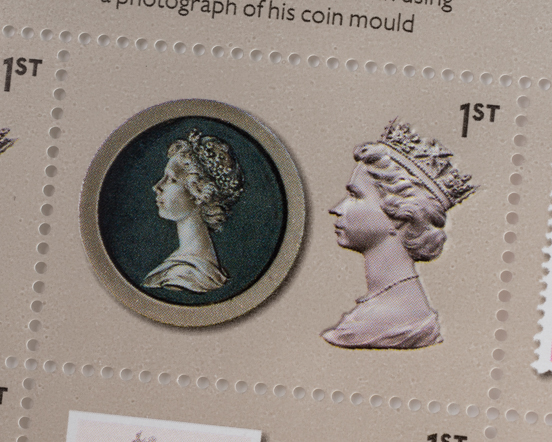
February 1966
Having trained as a sculptor, creating a relief portrait was the most natural way of working for Machin. He returned first to his Royal Mint work, sketching new highlights and changes over the top of photographs of his coin relief. Our second stamp presents one of these unusual photographic workings and one that he probably used as reference when he created his first clay model for the Royal Mail. There then followed a number of other casting and moulding steps, with intermediate refinements, before a first plaster cast was created. Eventually known as the 'coinage head' because of its origins, The Queen wore a tiara on her head and a corsage around her shoulders.
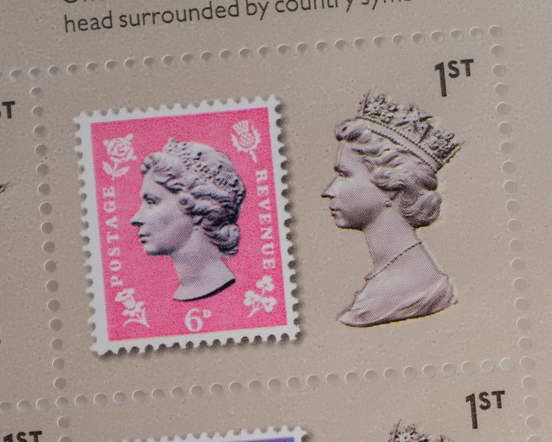
May 1966
The Royal Mail's independent Stamps Advisory Committee (SAC) regularly review the progress of all stamp designs. Records state that they found The Queen appeared too solemn, that her neck was too long, but the initial cast still had great promise. Machin made further refinements and more casts over the following months. He photographed the coinage head under different lighting conditions and again worked over his photographs, which in turn, informed his next sculptured reliefs. He straightened the neck, gave the lips a slight smile, rounded the nose, reduced the size of the ear, and added detail to the hair, tiara and corsage. The result was a less austere Queen. Our third stamp includes a very early stamp essay proof created by Harrisons, the Royal Mail's trusted stamp printers. Without Machin's input, Harrisons cropped the neck, dropped it onto a coloured background, surrounded it with regional symbols, added type, and over emphasised the contrast of the coinage head so that it lost all subtlety. The SAC did not take to these developments and returned to Machin asking him to look beyond the portrait, to design the stamp as a whole.
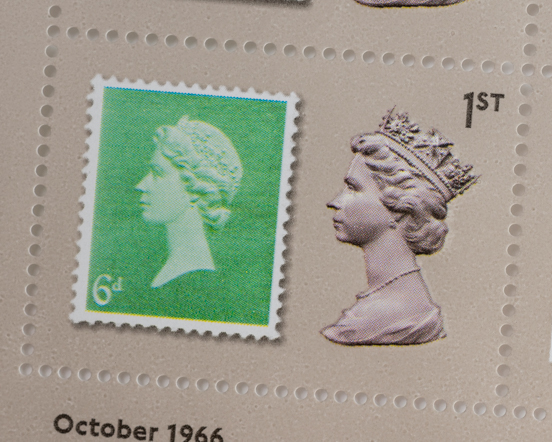
October 1966
Machin spent most of his summer thinking about the relationship of all the elements around the coinage head. He created sculptured lettering and a value. He also refined the coinage head, losing the corsage and replacing it with an elegant swooping neck crop. Over a number of iterations Machin reduced the graphic elements to just the coinage head and the value. He held on to his original vision of a subtle but detailed cameo on a contrasting background but also introduced bright colours; mauve, turquoise, indigo blue and cyclamen. A leaf green stamp essay proof appears on our fourth stamp.
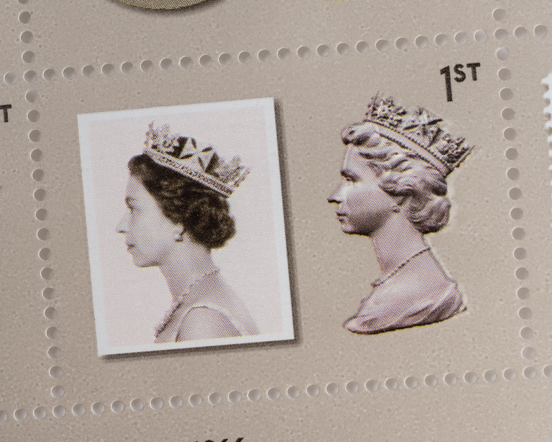
August 1966
Unbeknown to Machin, the SAC had asked the commercial artist David Gentleman to develop a photographic option. At one sitting The Queen was photographed wearing a tiara and then the Diadem crown. The photographer John Hedgecoe submitted 60 photographs, one of which sits on our fifth stamp. Gentleman used Hedgecoe's photographs in his submissions to the SAC. Ultimately, the SAC viewed Machin's sculptural work to be superior to Gentleman's photographic options but the Hedgecoe photographs of The Queen wearing the Diadem crown were ultimately to influence Machin's final proposals...
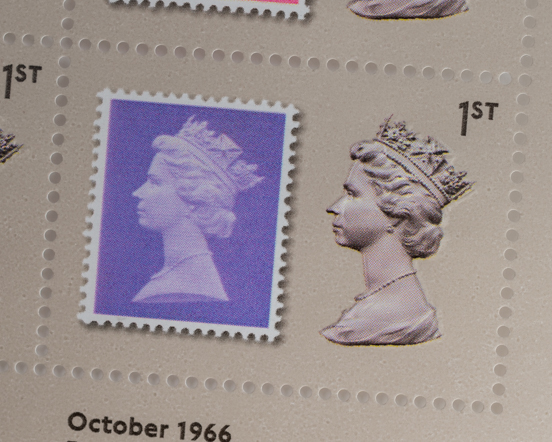
March 1967
Machin's coinage head had been created from Lord Snowdon's photographs taken in 1962, when The Queen was wearing a tiara. Hedgecoe's 1966 photographs captured The Queen wearing the Diadem crown. When the SAC compared Gentleman's photographic stamp designs with Machin's sculptured stamps they asked Machin to rework his coinage head so that The Queen was wearing the Diadem. He was given the Hedgecoe photographs to work from. In four weeks during October Machin returned to sketching over the Hedgecoe photographs, making new clay models, moulds, and casts. More lighting and photography tests helped him make further refinements and by late October Harrisons had printed new stamp essays — closely overseen this time by Machin himself, at his own insistence. These essays were without a value and became known as 'first Diadem heads'. One of these first Diadem heads appears on our final stamp. Whilst the Royal Mail were immediately impressed with the essays Machin was not happy with the sharp crop of the neck. He returned to the coinage head versions, one of which featured a corsage. Using this as his reference, Machin completed yet another sculpture adding a corsage and this final cast became known as the 'dressed head'. During December and January 1967 Machin continued to supervise the printing of new stamp essays until 30 options were ready to present to The Queen. In August 1967 The Queen approved 13 new definitives, stating that she was "glad to give her approval to these stamps which she considers admirable".
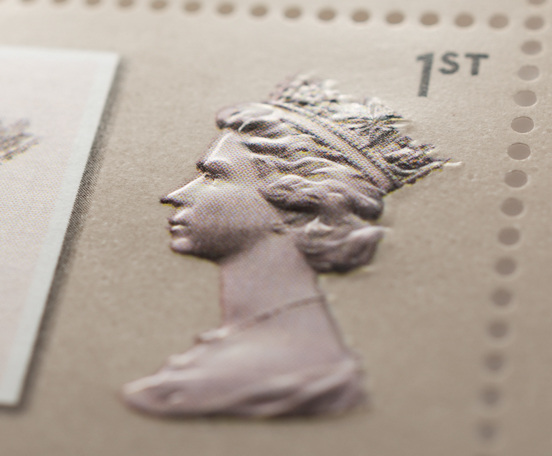 The original Machin cast is carefully contoured and stunning beautiful. Like all good sculpture, it tempts you to touch it to see if it is real. Yet we have all become very familiar with the Machin's definitives, reproduced as flat 2 dimensional portrait and the sculptural qualities of the artwork have been forgotten. It was for this reason that we asked Royal Mail if the Machin head could be embossed on the commemorative stamps.
The original Machin cast is carefully contoured and stunning beautiful. Like all good sculpture, it tempts you to touch it to see if it is real. Yet we have all become very familiar with the Machin's definitives, reproduced as flat 2 dimensional portrait and the sculptural qualities of the artwork have been forgotten. It was for this reason that we asked Royal Mail if the Machin head could be embossed on the commemorative stamps.
It impresses us to think about the alluring design influences of the 1960's; european asymmetric typography, new experimental photography, psychedeila, transformational corporate identities from the US, and pop art — and yet the design for a new definitive stamp came from a classically trained sculptor with a background in ceramics. It would have been so easy for the Royal Mail to have taken a safe path and commissioned a traditional engraver for the task. Alternatively, they could have embraced the spirit of the '60's and might have ended up with a Warholesque portrait. Instead, the Royal Mail were inexhaustibly patient, giving Machin more than a year to pursue untried methods; experimenting with new image manipulation processes and testing emerging print techniques. The end result was an innovative blend of traditional craft and 1960's modernism.
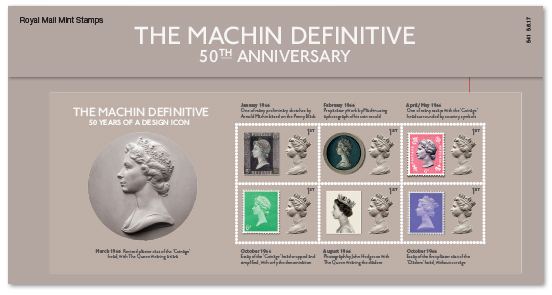
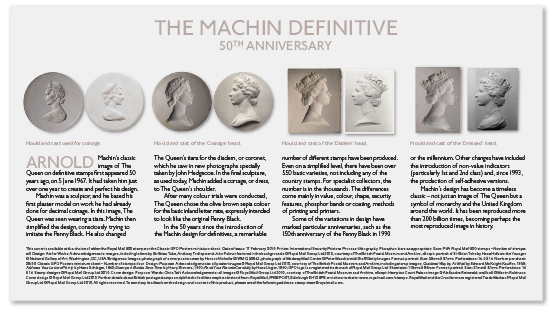
A full range of commemorative Machin products were designed for the Royal Mail's most dedicated philatelists — all of whom revere Machin and his achievements. Our stamp designs are therefore very restrained, reverential, and aim only to present the creative evolution of a cherished British icon.
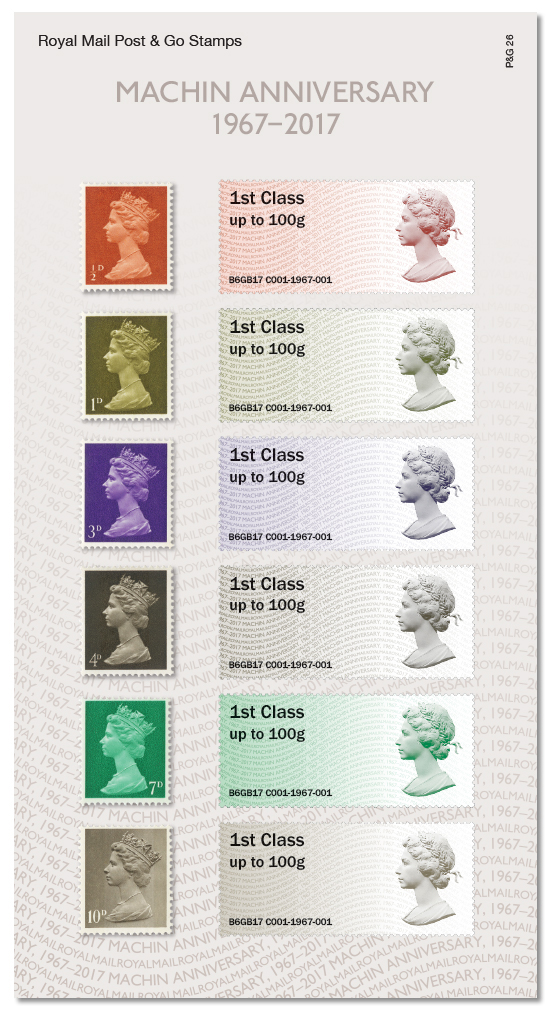
These 'post and go' stamps are available from vending machines where values are automatically overprinted. To mark the Machin anniversary these also featured the Machin head and we reinstated Machin's original 1967 colour scheme.
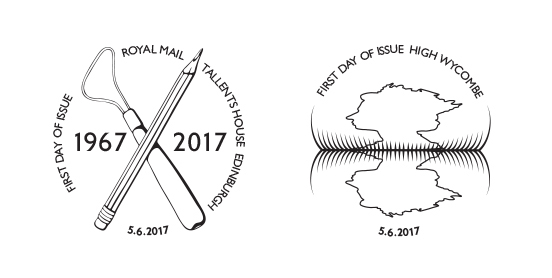
We designed a number of commemorative post marks. The principle post mark featured Machin's tools. A limited number of first day covers were issued from High Wycombe (the home of Harrison's the printers), and featured a printing press.
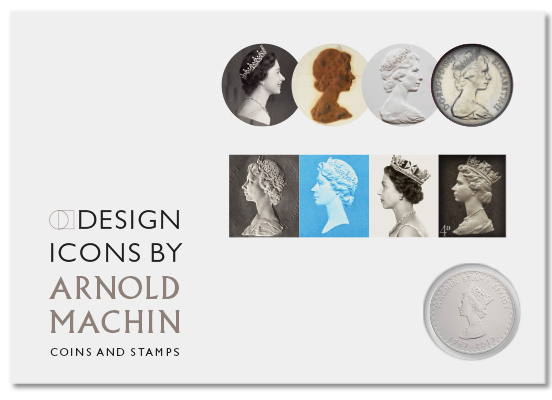
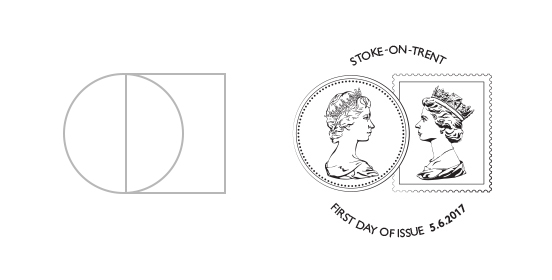
Arnold Machin's work for both the Royal Mail and the Royal Mint was jointly recognised with a commemorative pack, in which we recorded the parallel evolution of coin and stamp portraits. The circle and square formats were graphically represented with a pack icon and reflected in a special post mark. This product was issued from Stoke on Trent, Machin's birthplace.
Stamp format/size: landscape 34mm x 24mm. Print process: gravure. Perforation: 14 × 14. Phosphor: bars. Gum: PVA. Number of stamps: 6
Related project: Quincentenary